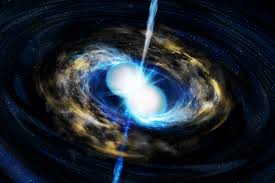(GRBs) are brief yet incredibly energetic explosions of gamma rays, often associated with supernovae, neutron star collisions, or black hole mergers which can emit also gravitational waves. Kilonovae are astronomical events resulting from the merger of two neutron stars, releasing substantial visible and infrared light. These phenomena can be interconnected, with kilonovae observed in association with certain GRBs. The study of these events provides valuable insights into the physical processes involved in these objects and contributes also to our understanding of the chemical elements formation in the universe.
Our primary interests involve gravitational waves sources and the study of their optical infrared counterparts, in particular Gamma Ray Bursts and Kilonovae.
We are part of the LSST/Vera Rubin Observatory collaboration inside the Transients and Varible Stars (TVS) Science Collaboration and also members of ENGRAVE (Electromagnetic counterparts of gravitational wave sources at the Very Large Telescope) which represents major groups across the European Southern Observatory (ESO) member states that have formed over the last few years to use the VLT (and ESO's 2-4m telescopes) for the follow-up study of the electromagnetic counterparts of gravitational waves.
Together with our group, we are working on studying the efficiency of several machine learning tools in selecting transients using light-curves of these objects. We are investigating how Rubin-LSST data will enhance our ability to constrain the parameters of kilonova models. Considering different configurations of telescope observational cadences, filter distributions, and sky coverage, we will be able to determine the best observational strategy that will allow us to collect enough detections and color information to derive a better description of kilonovae in all stages of their evolution.
Among various machine learning algorithms, the goals that could be achieved in this context in the coming months are related to the study of applications such as: (i) a deep learning algorithm to classify and estimate parameters from the photometric light curves of kilonovae; (ii) artificial intelligence algorithms to select the best possible configuration among exposure time, filter selection, and observational cadence to apply to a given follow-up dedicated to the joint detection of GW and EM counterparts.
These endeavors could also be useful, for example, in the preparation of multimessenger science for international projects dedicated to the construction of future interferometers such as the Einstein Telescope and the Lunar Gravitational Wave Antenna in which we are contributing to white papers and blue books as a scientific experts in Time Domain Astronomy.
